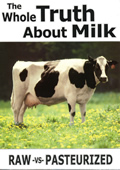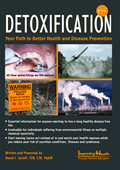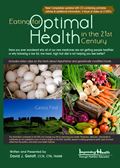FIVE
KEY THINGS TO LOWER LDL CHOLESTEROL HEALTHFULLY
PART 2 of 3
By
Byron J. Richards, CCN
February 27, 2011
NewsWithViews.com
In addition to their support for more normal cholesterol synthesis, magnesium and tocotrienols are indispensible to cardiovascular health for many reasons. Both act as anti-inflammatories and promote the health of arteries. Both inhibit damage to LDL cholesterol. Unlike statins, these nutrients have no adverse side effects.
Foods high in cholesterol don’t raise your cholesterol unless you are eating them as part of a diet too high in calories and lacking in fiber (which is common). Your liver will make as much LDL cholesterol as it sees fit, regardless of how much cholesterol you eat or don’t eat. You do not need to avoid cholesterol-containing healthy foods to lower your cholesterol. You do need to eat less food if you are overeating and quit snacking. And you especially need to cut down on excess sugar.
Solution #2 – Decongest Your Stagnant/Fatty Liver
By the time you have elevated LDL cholesterol it is typical that your liver is all gummed up with fatty sludge, to a greater or lesser degree, as is your gall bladder (that is, if you still have one). This will take a bit of time to get working again – it is not simply a matter of a nutritional deficiency – it is fatty and congested sludge that needs degreasing.
If you are overweight, this means you must engage a steady process of weight loss. Simply eating less food and more fruits and vegetables may be all you need to gradually degrease your liver as the months go by. If that is the case, then your problems weren’t too bad in the first place. More often than not, Solution #2 can really benefit from some extra help. While excess food consumption invariably causes this problem, it also occurs in normal weight people for any reason of toxic liver stress (such as excess alcohol, medication damage, infection, etc.).
The most basic dietary change you can make to support this step is to increase your dietary fiber. Even the incredibly myopic FDA can see the value in fiber, allowing a cardiovascular risk reduction health claim for soluble fiber intake. New research clearly proves higher fiber intake is associated with less cardiovascular disease and increased overall lifespan. It is a simple dietary basic you should never ignore and is especially helpful for degreasing your liver once your LDL cholesterol is elevated.
Fiber acts like a sponge to absorb cholesterol that is being cleared out of your liver in your bile. Thus, it helps your liver clear out its stagnation and has been shown many times to help lower LDL cholesterol. I suggest using supplemental fiber to add to your dietary fiber to reach a total of 50 grams of fiber per day. My favorite forms of supplemental fiber are psyllium, oat beta glucan, and arabinogalactan. There are many possibilities – work on getting enough – it really helps.
Low-fat protein is very helpful to fatty/stagnant liver. That is because protein is the primary calorie that makes your liver go – like 2 x 4s and plywood showing up at the job site. A great source of such protein is whey protein, which has been shown to help people lower their LDL cholesterol. I suggest it at least at breakfast. A recent study showed that 20 grams of whey protein, taken three times a day, lowered fatty liver by 20% after one month while reducing cholesterol – a rather impressive finding and a strategy that could be employed to help jump start a stagnant liver.
Additionally, there are a number of nutrients that help fat flow out of your liver (lipotropic nutrients), such as DHA and choline, that have been shown to help reduce fatty liver.
My favorite nutrient in this category is the co-enzyme form of vitamin B5 known as pantethine. Many studies show pantethine helps lower cholesterol in doses ranging from 600 mg to 900 mg per day. In a study of 16 patients with fatty liver and high triglycerides participants were given 600 mg of pantethine per day for at least 6 months. 9 of 16 were free of fatty liver at the end of the study, and also had reduced abdominal fat. Pantethine is to sluggish fat what an engine is to box cars – it provides the energy to haul it into metabolic action, thereby helping to reduce the backlog in the liver. Pantethine is an energizing supplement that boosts adrenal function – especially helpful if you are also tired or stressed.
Almost all indigestion that “requires” acid-blocking medication is not caused by high stomach acid, it is caused by a fatty liver dumping excess bile and cholesterol into the digestive tract as a coping strategy to get rid of the build-up of fatty sludge in your liver. The excess bile refluxes backwards, burning your stomach, even your esophagus.
Our bodies have little evolutionary experience being poisoned by too much food. To the contrary, we have elaborate systems for extracting fat from the diet to get it into our bodies so we don’t starve. Thus, we don’t have a lot of systems for efficiently dealing with excess. However, one solution involves a signaling system that is a type of fat-disposal thermostat called the farsenoid X receptor. Making a very complex story extremely short and simple, if you can turn this receptor down then you can dump out excess cholesterol and fatty sludge into your gut without excess bile that burns your gut. There is only one nutrient known to do this, guggulsterone, which is extracted from the gum of the sap from the myrrh tree (commiphora mukul), and has been used in Ayurvedic medicine for thousands of years. Studies have shown that guggulsterone can lower LDL cholesterol and assist with weight management.
When you are trying to fix health problems you have to pace yourself according to your body’s ability to handle what is going on. For example, while you may agree that jogging five miles a day is really good for aerobic fitness and cardiovascular health, you may not have the ability to do so and if you made your body do it you could suffer a lot of adverse side effects. On the other hand, if you gradually built up your aerobic fitness you could eventually do it and feel great. Likewise, this issue is especially important to consider when you are degreasing a stagnant liver and gall bladder.
A lot of people who lose weight too fast end up needing their gall bladders removed because they are trying to force so much extra fat sludge through an already congested system. Many people with high LDL cholesterol already have significantly congested gall bladders reflected by nausea or even vomiting after eating fat-containing foods. And the greater the indigestion in general the more the subject of a stagnant system is likely. This doesn’t mean you shouldn’t do something about it, it just means pay attention. Strategies to help your liver and gall bladder degrease themselves typically improve any existing issues until they are all gone. On the other hand, if your attempts at improvement seem to flare up symptoms then go slower. This issue must be solved in order to solve one of the most important reasons LDL cholesterol is inappropriately elevated.
I should also point out that many people with this problem don’t have indigestion. The degreasing of fatty build-up in your liver is consistent with the size of your waistline, as it shrinks you are improving the problem. Because this is a long-term project for many people it is important to establish a trend in the right direction and then maintain that trend. The stress of elevated LDL cholesterol will likely improve before your liver is fully degreased. However, if you are overweight this problem is not really solved until you eventually reach a reasonable goal weight. While a flat stomach is best, it may be unrealistic for some. We do know that when your waistline in inches is more than half your height in inches you have significant problems in this category.
Solution #3 – Stabilize Cell Membranes, Reduce Inflammation
Alcoholics typically have fatty liver and elevated LDL cholesterol even if they are normal weight or under weight. Partly this is due to direct damage to the liver. But it is more than that and serves as a great example for another important point about why LDL cholesterol is elevated in so many people.
When cells around your body are exposed to excess alcohol, the alcohol which is fat soluble will cross cell membranes (punching them in the nose) and induce toxic damage within the cell (excess alcohol kills brain cells). This has a deflating effect on the three-dimensional structure of your cells. Your cells respond by trying to prop their three-dimensional structure back up – which requires cholesterol bricks.
Constant exposure to excess alcohol repeats this process, causing several major problems:
1) Since the cell struggles to make enough cholesterol itself it is sending a 911 phone call to the HMG CoA traffic cop in your liver to make more cholesterol bricks and send them by overnight delivery via the LDL-UPS truck, thereby elevating LDL cholesterol levels in response to cellular damage.
2) The repetitive injury to cells causes too many cholesterol bricks to become part of the cell membrane – drastically impairing the healthy function of the cell – although the cell is still alive. In essence the cell becomes stiff. And this process going on in many cells of a tissue type or organ causes generalized stiffness (stiff brain, stiff arteries).
Here is another example. The fat cells within your white adipose tissue are getting crammed full of fat blobs (triglycerides) as you gain weight. Your fat cells are now bursting at their seams. In order to stabilize their expanded size they must synthesize cholesterol bricks. As weight gain continues a crisis occurs and a 911 phone call is now going from your bursting fat cells to your HMG CoA traffic cop for more cholesterol, again raising LDL.
| Subscribe to the NewsWithViews Daily News Alerts! |
This mechanism is invariably involved, to a greater or lesser extent, with every single person with elevated LDL cholesterol regardless of their weight or alcohol intake. That is because there are many possible sources of inflammatory wear and tear, ranging from emotional stress to a lack of sleep to fighting chronic low-grade infection (like periodontal problems). The bottom line is that cellular irritants of any type induce low-grade inflammation while depleting your antioxidant reserves. And it is very important to understand that this process has to be going on in order for LDL cholesterol to form plaque in your arteries. Only damaged LDL cholesterol forms plaque.
It is true that if you have elevated LDL cholesterol then you are more at risk for having damaged LDL. However, LDL damage can be going on regardless of your number. For part three click below.

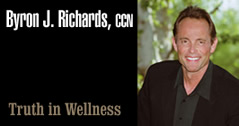

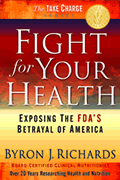
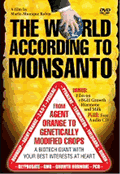

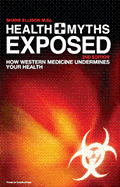






 Share
This Article
Share
This Article